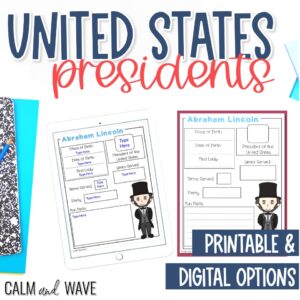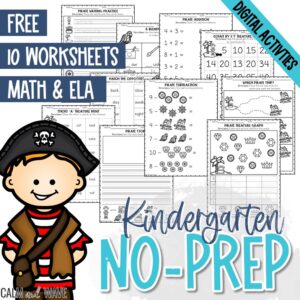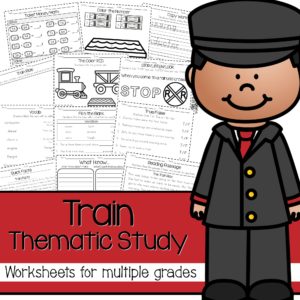
Planning a Homeschool Thematic Unit
Planning a homeschool thematic unit can seem daunting, but it doesn’t have to be! With simple planning and preparation, you can design an effective, engaging unit to give your children hours of meaningful education. In this article, I will walk you through the steps for creating and implementing your own homeschool thematic unit, including free printable homeschool unit planner pages. With tips on how to choose themes, select activities, develop learning objectives, and more – this is your one-stop guide for getting started with successful thematic units in no time at all!
This post may contain affiliate links. This means I may earn some money should you choose to sign up for a program or make a purchase using my link. I only recommend companies or items that I love and think you will too!

1. Establish a theme
When planning a thematic unit for homeschooling, start by establishing an overarching theme that inspires passion or curiosity in your child while covering key topics. Connecting learning to your child's interests helps motivate them to dive deep into a subject and retain information more easily. Some theme ideas are space, sharks, or other topics that might interest your child. Once you have a theme, it is time to start brainstorming what you will include in your thematic unit.
2. Brainstorm
Brainstorming, or brain dumping, can be a handy tool when it comes to planning a thematic homeschool unit study. It helps to get all your ideas out of your head and on paper, which makes them easier to organize into a cohesive plan.
When brainstorming, consider what topics you wish to cover and what information you want your child to gain. Additionally, use the space provided in your planner (or any plain piece of paper) for your brain dump so that everything is easily accessible and organized.
Brainstorming can help give structure and purpose to any project, so don't underestimate its importance!
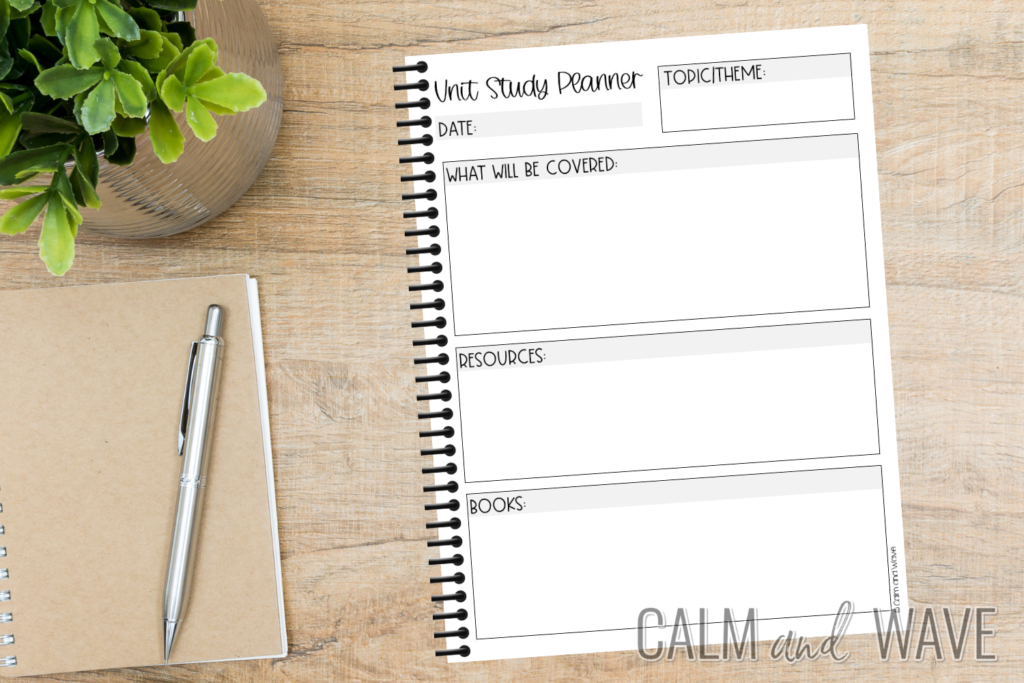
3. Learning Objectives
Learning objectives are statements of the specific knowledge, skills, and abilities that students can demonstrate upon completion of a lesson or unit. They provide a clear focus for instruction and assessment. Learning objectives should be specific and measurable; they should describe what students will know or can do after completing the course or unit. Additionally, learning objectives should identify the skills needed to succeed in the course or project. By setting clear learning objectives at the beginning of each lesson or unit, educators can ensure that their students have a concrete understanding of what is expected from them in order to gain mastery of a particular subject. An example of a learning objective for a unit of study on space could be: “At the conclusion of this unit, students will be able to identify and label the parts of our solar system, as well as explain how they interact with one another.”
4. Make Your Plan
Now it is time to create a plan of study that will allow your student to learn, understand, and stay engaged. Here are some tips for making an effective plan:
- Start with the end goal in mind –Take the learning objective you y identified and work backward to create your plan.
- Tailor activities to student needs – Consider how your student learns best and create activities or projects that engage them in their learning process.
- Include assessments – If you plan on having any assessments, be sure to include all necessary information in your lessons for the students to prepare for it effectively.
Some ideas for activities or projects to include in your lessons:
- Reading Passages w/ comprehension questions
- Interactive Notebooks (digital or print)
- Essays
- Presentations (digital or print)
- Create a game to teach others
- Make models
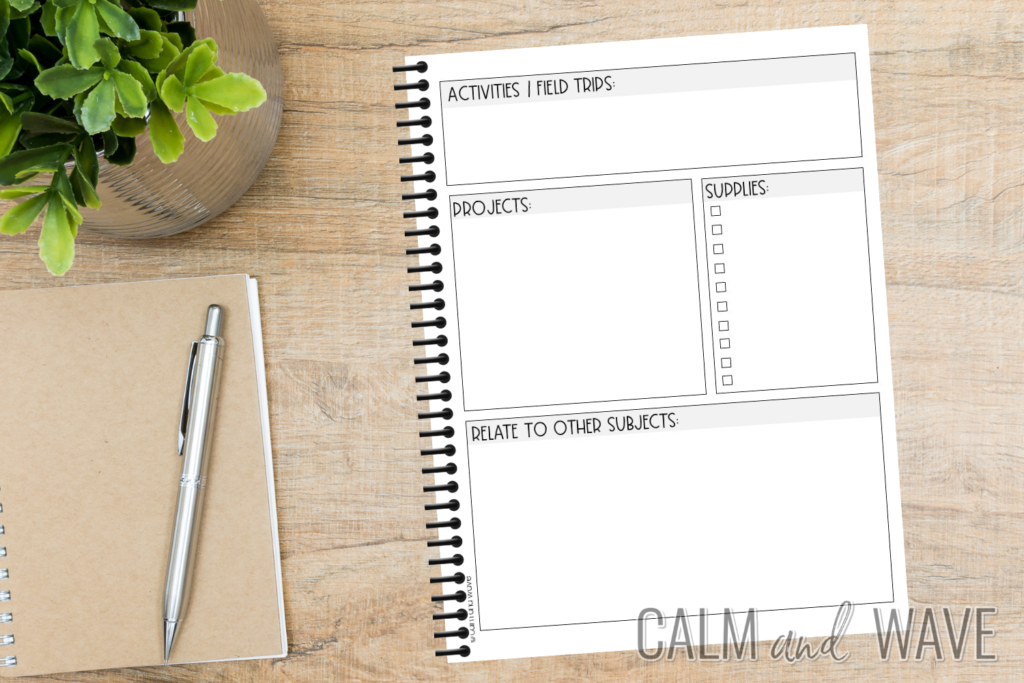
5. Round Out Your Unit
Gathering resources for a unit study can be essential to the learning process. Resources could include books, websites, models, manipulatives, documentaries, and more. Here are some tips:
- Tap Your Local Library – Libraries usually have a wide variety of books on different topics that can be great resources for your child's studies.
- Have A Place to Store Resources – Find a designated place near where your child usually does school so they can easily access the needed materials.
- Encourage Independent Learning and Research – Allow your child to explore topics that interest them and encourage them to take ownership of their learning process by doing independent research and exploration.
- Consider a Field Trip – Visiting a place relevant to your lesson topic can be a fun and educational experience.
6. Optional – Relate to Other Subjects
Who doesn’t like to “kill two birds with one stone.” Including other subjects in your unit study will engage your child and make covering the other topics easier. Writing, reading, social studies or science, and art are great options to include in most unit studies. With some creativity, you can also incorporate math or language arts. For example, for our space unit study, we graphed the sizes of the planets for math. For language arts, we reviewed sentence types. The kids wrote different types of sentences with a space theme.
7. Optional – Assessment
Considering a formal assessment might be a good option if you want to evaluate your child's learning progress or meet the requirements of certain states. Some benefits of assessments:
- Measure Understanding – With an assessment, you can accurately measure how much your child has understood from the lesson.
- Identify Weak Areas – Assessments can help identify areas where improvement is needed so that you can focus on those areas more.
- Document Your Child's Progress – Formal evaluations provide evidence of your child's academic progress over time and can be used as a reference when necessary.

8. Schedule- Plan Ahead to Make the Most of Your Unit
Creating a schedule for your unit is essential in ensuring it's successful. Here are planning tips:
- Estimate Duration – Consider the length of time needed to cover the topic and adjust accordingly based on your child's attention span.
- Break It Down – Divide the unit into sections by week or day, depending on your time frame and planned activities.
- Make Adjustments – Don't be afraid to switch things up if you feel like something is not working as intended – that way, you can make sure your child gets the best out of their studies.

Planning a homeschool thematic unit study can be easy and fun. With the right tools and resources, you can easily create an engaging and exciting learning experience for your students. The key is to take the time to plan, gather appropriate materials, and research different activities to use in your unit study. Don't forget that having fun is also essential when it comes to teaching kids – after all, they're still children! When you follow these steps and go into the process with enthusiasm and excitement, you can create a successful and fulfilling unit study that your students will love. And remember: don't forget to download our free unit planner printable for easy and organized planning! We hope this blog post helped guide your journey to creating an excellent homeschool thematic unit study for your little learners.

